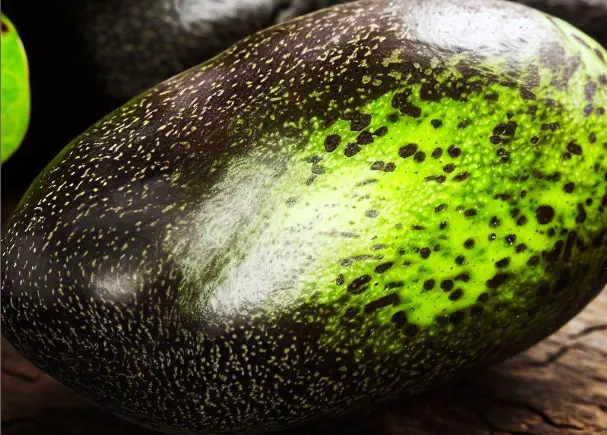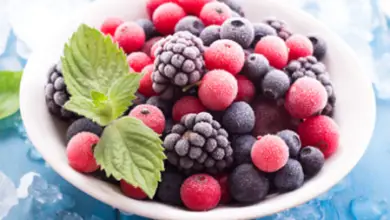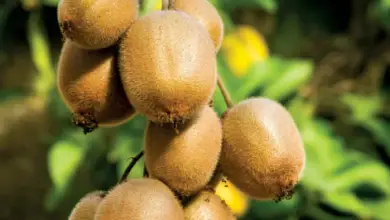Spotless Mangoes: How To Prevent Black Spots On Mangoes

Mangoes are delicious tropical fruits enjoyed by many around the world. Their juicy, sweet flesh is a delight to the taste buds. However, there is nothing more disappointing than slicing open a mango only to find unsightly black spots that diminish its appeal.
These black spots can be caused by various factors, including fungal infections and fruit diseases. In this article, we will explore effective ways to prevent black spots on mangoes and keep them spotless and delicious.
Table of Contents
- Understanding the Causes of Black Spots
- 1. Fungal Infections
- 2. Fruit Diseases
- How To Prevent Black Spots On Mangoes
- 1. Proper Harvesting
- 2. Proper Storage
- 3. Pre-Washing
- 4. Drying the Mangoes
- 5. Organic Fungicides
- 6. Proper Pruning and Air Circulation
- 7. Avoiding Injuries
- 8. Sanitizing Tools
- 9. Regular Inspection
- 10. Beneficial Insects
- Conclusion
Understanding the Causes of Black Spots
There are several reasons why mangoes can develop black spots:
1. Fungal Infections
Mangoes can be susceptible to fungal infections, such as anthracnose and stem end rot. These infections are caused by fungi that thrive in warm and humid conditions. They can penetrate the mango’s skin, leading to the development of black spots on the fruit.
2. Fruit Diseases
Several fruit diseases, such as bacterial black spot and powdery mildew, can also result in black spots on mangoes. These diseases are caused by bacterial or fungal pathogens and can affect the appearance and quality of the fruit.
How To Prevent Black Spots On Mangoes

Prevent black spots on mangoes by harvesting them at the right time, storing them in a cool and well-ventilated area, pre-washing and drying them thoroughly, using organic fungicides, maintaining good airflow, avoiding injuries, sanitizing tools, and regularly inspecting the fruits and tree for signs of disease.
1. Proper Harvesting
Harvesting mangoes at the right time is crucial for preventing black spots. It is essential to pick mangoes when they are fully ripe but not overripe. Overripe mangoes are more prone to fungal infections and the development of black spots.
2. Proper Storage
Storing mangoes properly can help maintain their freshness and prevent the growth of fungi. Mangoes should be stored in a cool and well-ventilated area. Avoid overcrowding the fruits, as this can lead to increased moisture and create an ideal environment for fungal growth.
3. Pre-Washing
Before consuming or storing mangoes, it is advisable to give them a gentle pre-wash. Use clean water to rinse off any dirt or debris on the skin. This helps remove potential sources of fungal or bacterial contamination.
4. Drying the Mangoes
After washing, make sure to thoroughly dry the mangoes before storing them. Excess moisture on the skin can promote the growth of fungi. Use a clean cloth or paper towel to gently dry the mangoes, ensuring they are completely moisture-free.
5. Organic Fungicides
Using organic fungicides can be an effective preventive measure against black spots on mangoes. Natural products containing neem oil or copper-based fungicides can help control fungal infections and reduce the chances of black spot development.
6. Proper Pruning and Air Circulation
Maintaining good airflow and sunlight penetration in the mango tree canopy can reduce the risk of fungal infections. Prune the tree regularly to remove dead branches and leaves, allowing better air circulation and preventing the buildup of moisture.
7. Avoiding Injuries
Mangoes with cuts, bruises, or other injuries are more susceptible to black spots. Handle the fruit with care to prevent any damage during harvesting, transportation, or storage. A small wound can provide an entry point for fungi, leading to the formation of black spots.
8. Sanitizing Tools
If you need to prune or trim your mango tree, make sure to sanitize your tools properly before and after each use. Cleaning the tools with a diluted bleach solution or rubbing alcohol helps prevent the spread of diseases and infections.
9. Regular Inspection
Regularly inspecting the mango tree and its fruits can help identify any signs of disease or infection early on. If you notice any black spots or unusual discoloration, take prompt action to prevent further spread. Remove infected fruits or branches to protect the rest of the tree.
10. Beneficial Insects
Encouraging the presence of beneficial insects, such as ladybugs and lacewings, can help control pests that may contribute to fruit diseases. These insects feed on pests like aphids and mites, reducing the risk of infections and black spot development.
Conclusion
Black spots on mangoes can be prevented by adopting several proactive measures.
Proper harvesting, storage, pre-washing, and drying of mangoes are essential steps to keep them spotless. The use of organic fungicides, maintaining good airflow, and avoiding injuries can also contribute to spotless mangoes.
Regular inspection and the presence of beneficial insects are crucial in identifying and controlling diseases. By implementing these preventive measures, you can enjoy delicious, spotless mangoes with confidence.







